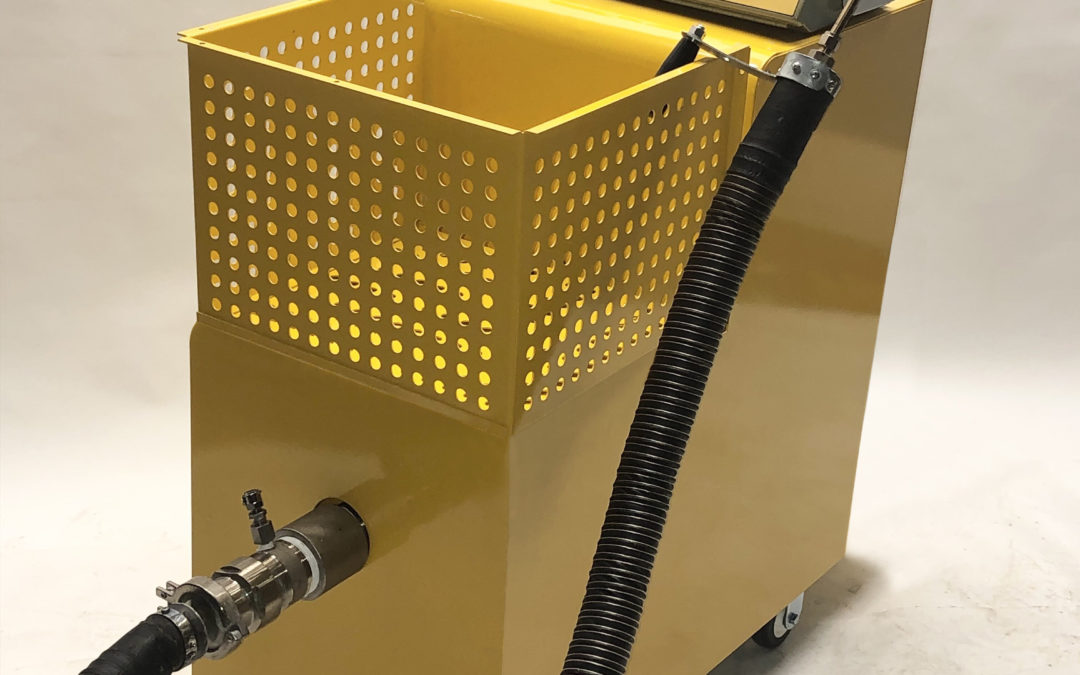
Rapidly Sterlizing Mushrooms and Mushroom Containers
There Is a Lot of Fungus Among Us – The New York Times (nytimes.com)
Avoid pesticides and herbicides. Use the high productivity clean steam solution.
Link to SaniZap-4-600

There Is a Lot of Fungus Among Us – The New York Times (nytimes.com)
Avoid pesticides and herbicides. Use the high productivity clean steam solution.
Link to SaniZap-4-600

Drying with superheated steam does have some definite advantages over drying
ceramics or food with hot air. The saturated steam atmosphere transfers the heat more efficiently
to the part than dry, hot air does. Superheated steam has a higher heat capacity and much
higher heat transfer quotient than does dry air making the steam a much better drying
medium. By heating the part completely before evaporation starts, the process allows the
ceramic or food to dry evenly throughout its volume at the same rate. The outer surface does not
dry and shrink first, thereby slowing the drying of the interior. The evaporation rate is
better controlled as is the drying rate, which results in a more uniform ceramic and fewer
cracks due to shrinkage.
References:


This is similar to saying we should not wash our hands or we should reduce hygiene. We think the problem has more to do with the excessive use of toxic chemicals (yes, chemicals in concentrations are toxic). We do not recommend UV Ultra-Violet because the damage effects of UV on human tissues and cells are cumulative.
We recommend steam. Why Steam?
Can biofilms be eliminated with steam – a bit of antimicrobial trivia included?
Why are the SaniZap® Generators more Efficient than Boiler type of Steam Generators?
Compare Energy Savings with Rapid Steam Techniques to remove grime and dirt.
Chlorine disinfection promotes the exchange of antibiotic resistance genes across bacterial genera by natural transformation. The ISME Journal (2020) 14:1847–1856
https://doi.org/10.1038/s41396-020-0656-9. “Antibiotic resistance has become a worldwide crisis. It is estimated that antibiotic resistance will cause as many as 10
million casualties annually by 2050 if no action is taken now…………”
Increasing tolerance of hospital Enterococcus faecium to handwash alcohols. Sci. Transl. Med. 10, eaar6115 (2018) 1 August 2018
Non-antibiotic antimicrobial triclosan induces multiple antibiotic resistance through geneticmutation. Environment International
Volume 118, September 2018, Pages 257-265 “The findings advance our understanding of the potential role of NAAM chemicals in the dissemination of antibiotic resistance in
microbes, and highlight the need for controlling biocide applications.”
Water Disinfection Byproducts Induce Antibiotic Resistance-Role of Environmental Pollutants in Resistance Phenomena. Environ. Sci. Technol. 2016, 50, 6, 3193–3201 Publication Date: February 29, 2016
https://doi.org/10.1021/acs.est.5b05113